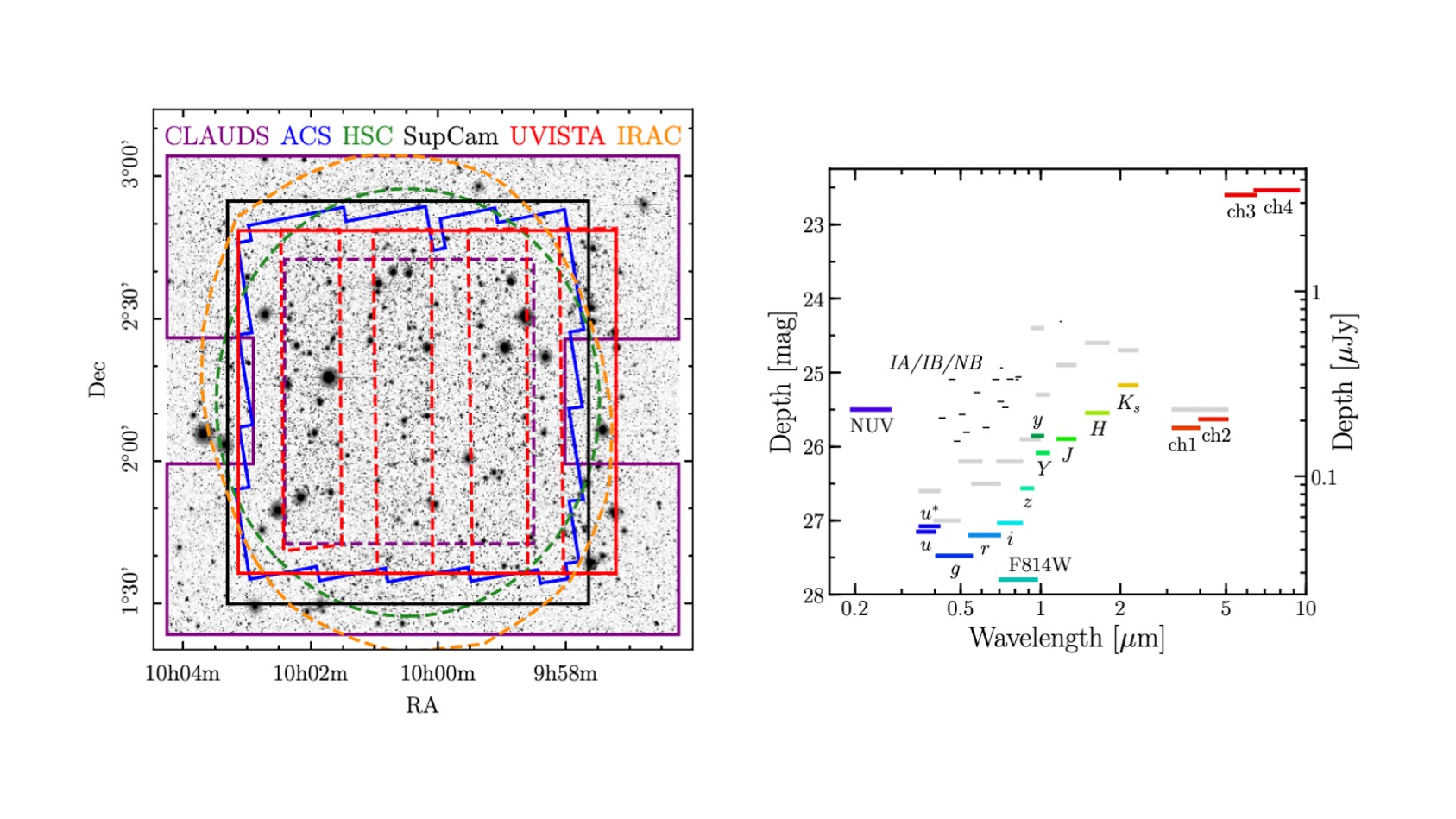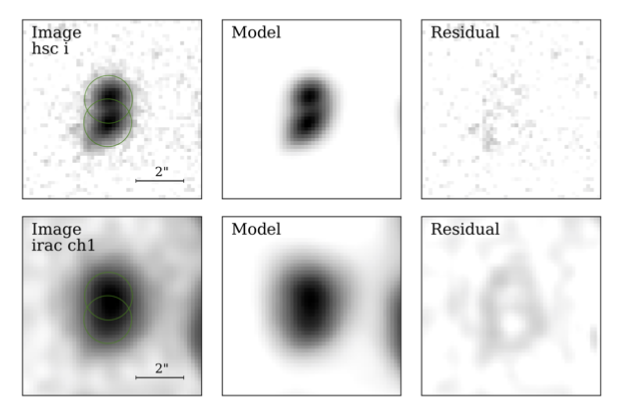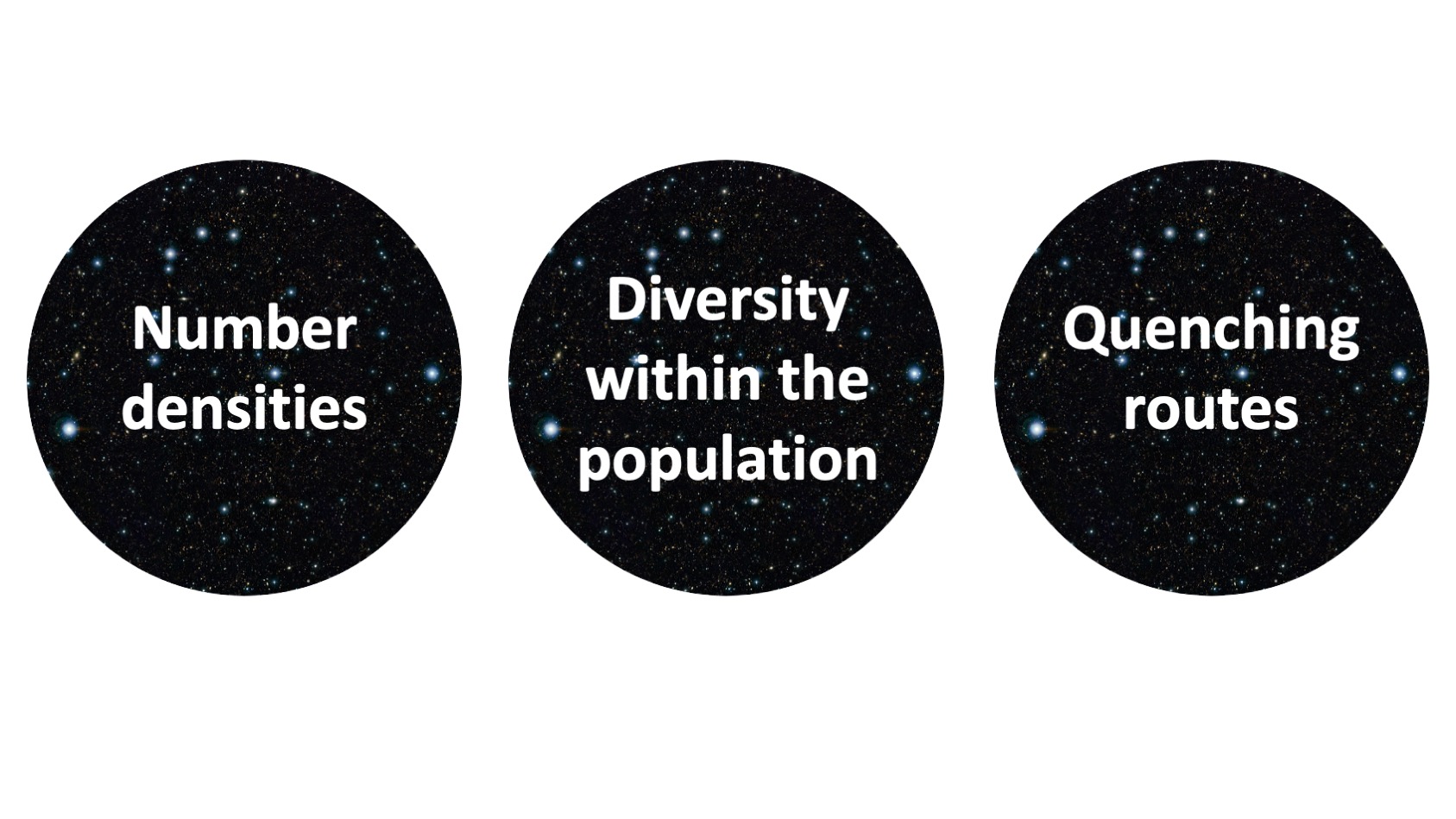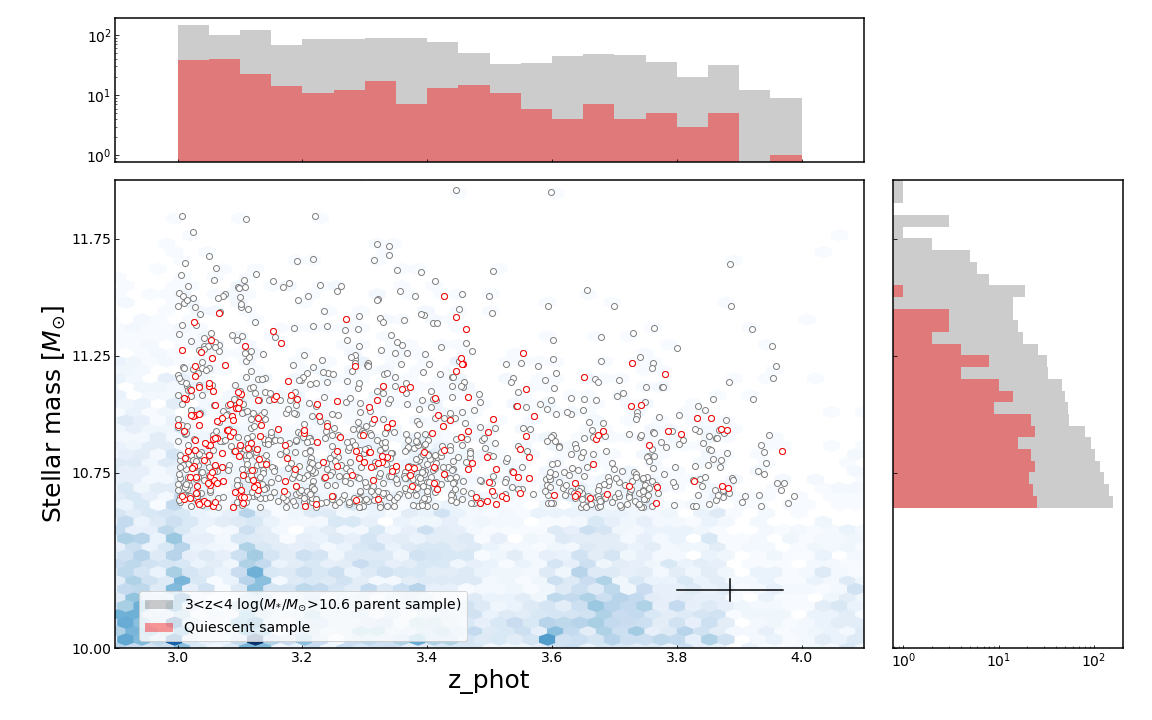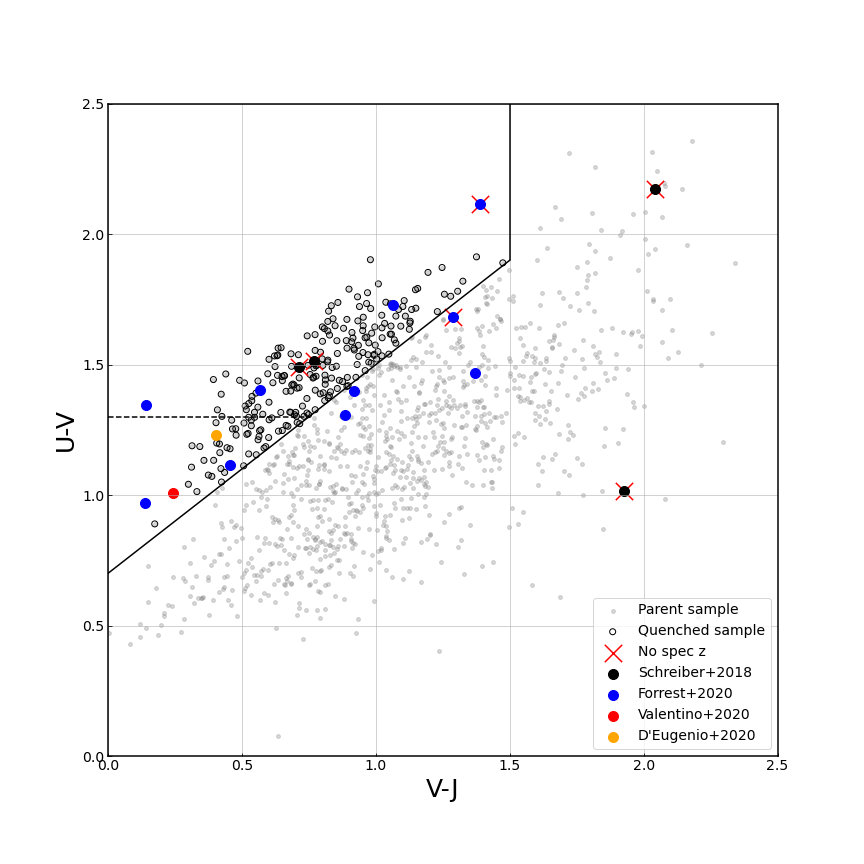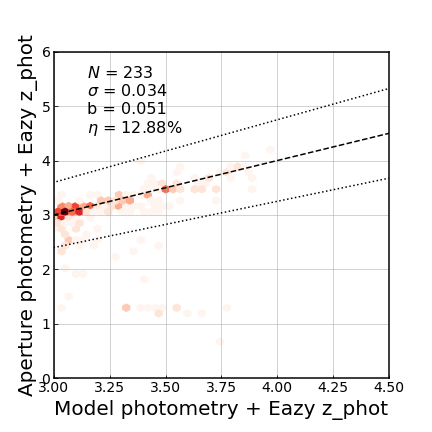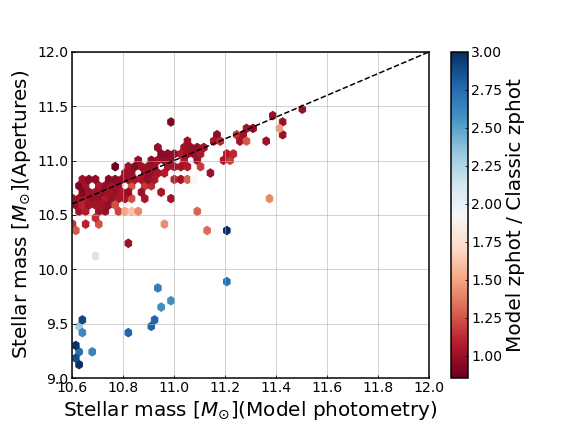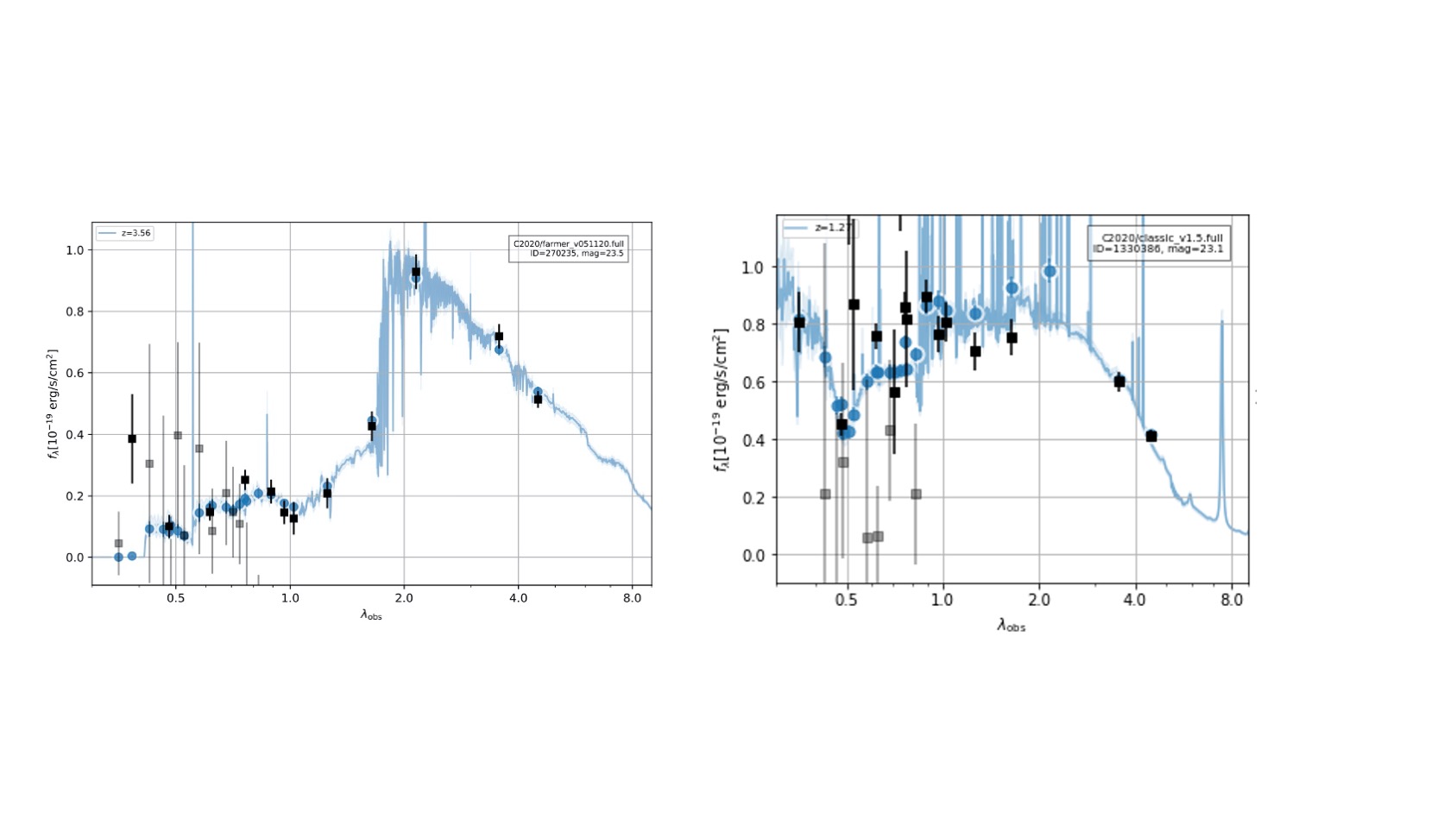We will infer star formation histories for all galaxies in our sample with the state of the art non-parametric SED fitting code Dense Basis (Iyer et al., 2017).
Non-parametric star formation histories allow greater flexibility, introduce less biases and can recreate more realistic mass formation compared to parameterised star formation histories such as delayed tau models.
We aim to deduce:
1. The quenching timescales for all galaxies in our sample
2. How many galaxies may have undergone a star burst prior to quenching.
3. Whether any galaxies in our sample are truly quiescent based on their star formation history.
Below is one example of a massive quiescent galaxy from this work fit with Dense Basis, which has a quenching timescale on the order of ~500 million years. However, in general we find that this sample has a median quenching timescale much shorter than this, of ~ 250 million years.
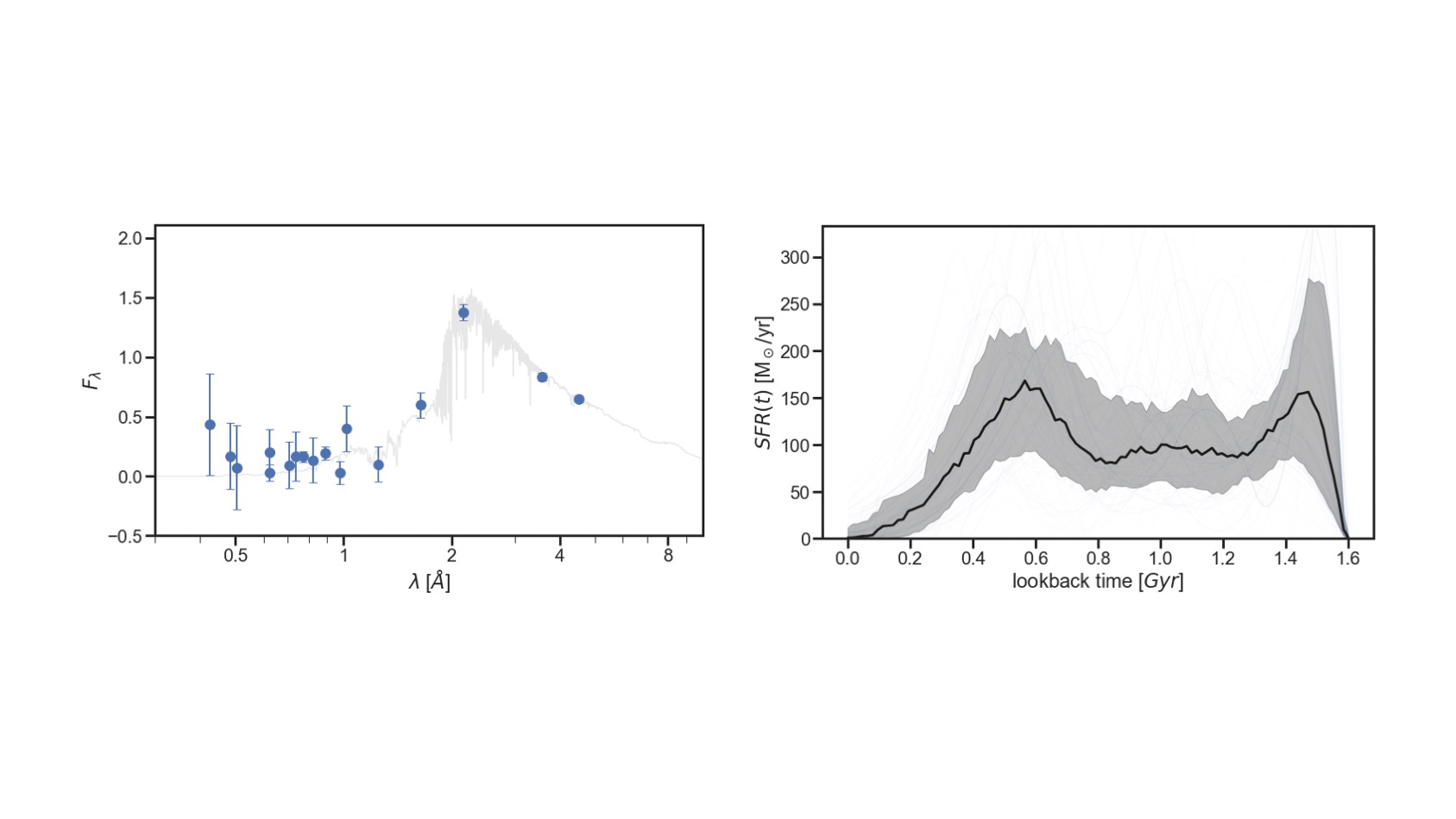
Left: SED (grey) fit to COSMOS2020 photometry (blue) with Dense Basis. Right: Inferred star formation history.


